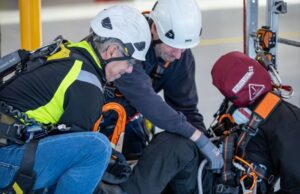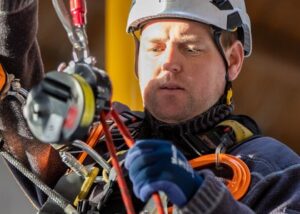The renewable energy sector, particularly wind energy, is experiencing significant policy shifts in 2025. Recent actions by the Trump administration, such as suspending clean energy projects on federal land and canceling initiatives like the $5 billion Empire Wind project, have introduced uncertainties in the industry . These changes underscore the importance of robust safety training programs to ensure workforce readiness and compliance amid evolving regulations.
The Impact of Policy Changes on Wind Energy
The administration’s directive to halt federal leasing and permitting for new wind energy projects has prompted legal challenges from 17 Democratic-led states and the District of Columbia, arguing that the suspension undermines the clean energy sector and violates federal laws. Such policy reversals can disrupt project timelines, affect investment confidence, and create workforce uncertainties.
The Role of STL USA in Ensuring Workforce Preparedness
In this dynamic policy environment, STL USA plays a crucial role in maintaining a skilled and compliant workforce. Our comprehensive training programs, including GWO-certified courses and the Total Wind Training pathway, equip technicians with the necessary skills to adapt to industry changes .
STL USA’s offerings to support an adaptive energy workforce include:
GWO Basic Safety Training: Covering essential safety protocols for wind technicians.
Advanced Rescue Training: Preparing technicians for emergency situations at height.
Electrical Safety Courses: Ensuring compliance with NFPA 70E standards.
WindStart Program: Introducing new entrants to the wind energy sector.
GWO Enhanced First Aid: Delivering advanced first aid response skills tailored to high-risk wind environments, enhancing preparedness beyond basic first aid.
BOP Substation/PMT Switching: Providing technical instruction and safety procedures for balance of plant systems, including substation and pad-mounted transformer switching operations.
Gearbox & Borescope: Training technicians to inspect and diagnose gearbox internals using borescope technology—essential for predictive maintenance and reliability.
By providing these programs, STL USA ensures that technicians are not only skilled but also adaptable to regulatory changes.
Adapting Training to Meet Regulatory Requirements
As policies evolve, so must training programs. STL USA continuously updates its curriculum to reflect the latest industry standards and regulatory requirements. Our collaboration with industry partners and regulatory bodies ensures that our training remains relevant and comprehensive.
Conclusion
Navigating the complexities of policy shifts in the wind energy sector requires a proactive approach to workforce training. STL USA remains committed to providing top-tier safety training programs that prepare technicians to meet current and future challenges. By investing in comprehensive training, the industry can ensure resilience and continued growth, regardless of policy landscapes.
Learn more about our bespoke training programs
Email us to ask about building a training program unique to your needs.




